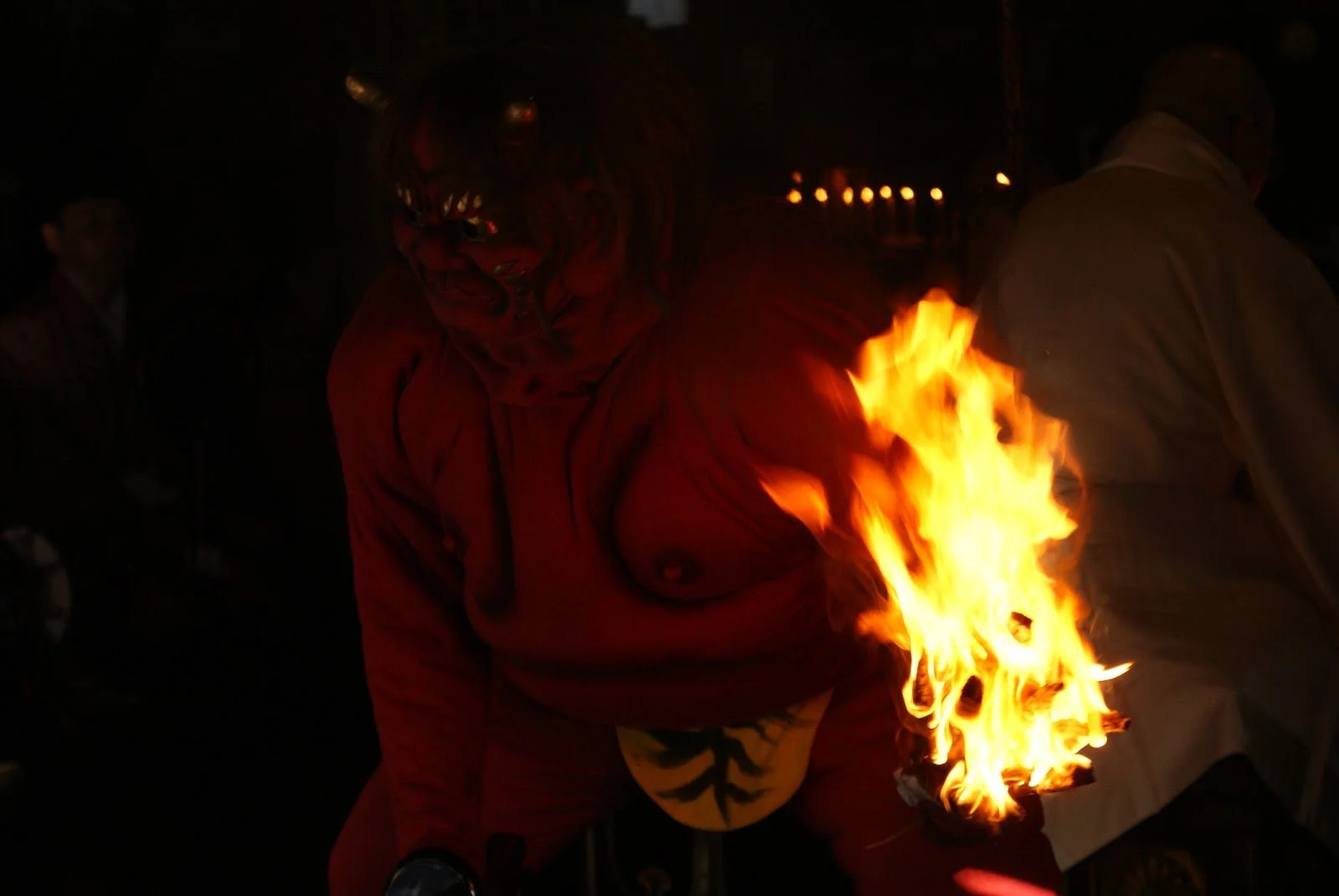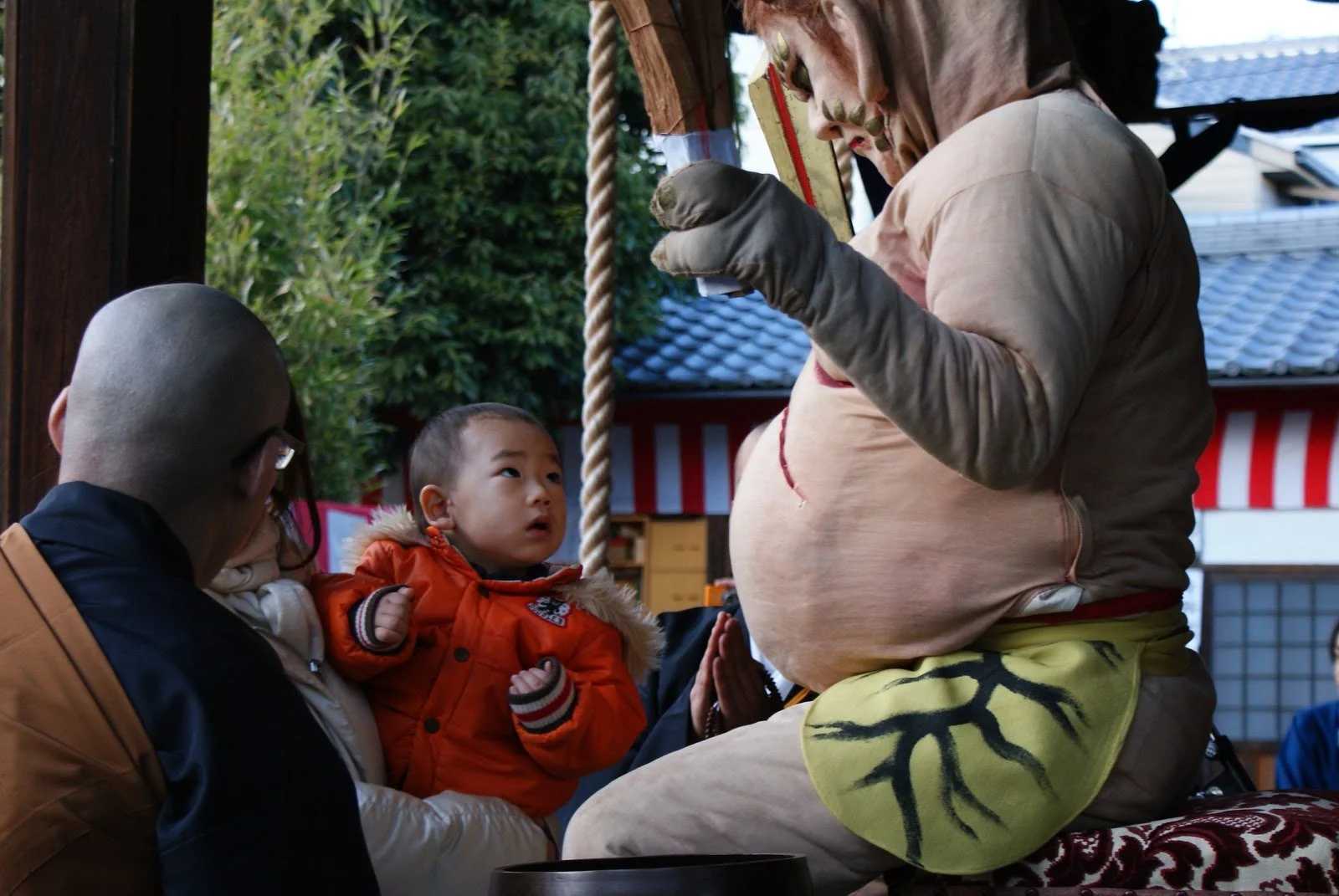The last of last year's magic
The key to successful spring cleaning: demon removal.
By the reckoning of an East Asian calendar, the first day of spring comes in early February. This year, it falls on Feb 4. The day before – called Setsubun in Japan – serves as a kind of New Year’s Eve. To prepare for the incoming year, people purify their homes by throwing roasted soya beans out of the door. In some households, one person will don a demon’s mask and be pelted with beans, driven off in a symbolic cleansing.
Shrines and temples have their own rituals, with the one at Rozan-ji in Kyoto among the more well-known. The highlight of the event: oni odori – the demon dance.
A small temple beside the grounds of the imperial palace, Rozan-ji is quiet for most of the year. But on the afternoon of Feb 3, the courtyard is packed with visitors waiting for demons.
A man in the temple’s main hall begins to pound an enormous drum. Smoke rises in the distance as a red demon slowly comes into view. With a sword in one hand and a burning bundle of wood in the other, it lumbers onto the walkway leading to the temple hall. Two more demons follow – a green oni with an axe and a black one bearing a sledgehammer.
Armed and ungainly, they move by lifting their hefty legs high and stamping down in a move that should shake the earth. Now and then, they stop to glower around them, thrusting their horned heads at the crowd.
Nobody throws any beans because everyone’s too busy taking photos.
The demons invade the main hall, where monks are chanting, led by an elderly priest dressed all in white. Prancing around him, the oni menace the people there. A child among the rows of visitors starts to cry.
Outside, in the sunlight, the oni seem a little comical – men in padded suits and tiger-print loincloths. But in the dark of the hall, their horns glinting in the firelight, the oni look like the demons they are meant to be.
They disappear inside the temple; the monks keep up the chanting.
After a few minutes of this, a woman speaks over the public announcement system. ‘Ladies and gentlemen, the demons will be running away shortly. The demons will be running away shortly. The bean-throwing will commence after the demons have run away.’
Two men lift conch shell horns to their lips and blow, the blasts like the lowing of demonic cattle.
And the demons burst out from behind a screen into the main hall, staggering about without their weapons.
The chanting must have worked.
At Rozan-ji, the oni represent three things said to bedevil humanity: ignorance, desire and hatred. To drive the oni away is to express the hope that people will rid themselves of the demons riding their backs, the weights holding them back from a new life in the new year.
The defeated oni have fled outside into the crowd. But there, the purpose of the ritual seems to have been ignored in favour of a jollier one. People smile up at the demons, trying to touch them. The oni too have gone out of character, posing for photos with visitors. As he passes a little girl, the red demon pats her on the head.
Others in the crowd are already getting ready for the next event: bean-throwing. A mother shows her young daughter how to turn a plastic bag into a makeshift net. They practise holding their bags up.
The monks file outside with trays of rice cakes and roasted soya beans, covered with sugar in the auspicious colours of red and white. To catch and eat one is said to bring good fortune in the new year.
Smiling, the monks fling handfuls of beans and cakes into the crowd, who angle hats, plastic bags, rucksacks or just their bare hands in a frantic effort to catch them. A young monk at one corner tosses the beans as he is supposed to – then slips a few into the hands of nearby children.
For those who don’t manage to catch anything, there’s always the option of the temple shop, which sells the beans in bags decorated with a paper demon mask.
But the spring cleaning isn’t complete till the final event of the day. Visitors have not just come to see demons expelled; they’ve also brought the paper fortunes, charms and amulets that they’ve received at shrines and temples over the past year. These have to be disposed of in the proper manner.
The visitors leave them outside in a heap surrounded by sacred rope and strips of white paper. At 5pm, two monks put their hands together and chant over the stack. Ceremoniously, they set fire to the lot.
A few people watching them draw closer to the blaze.
Today may be the last day of winter but it still turns dark before 6pm, the temperature plunging to around zero.
We warm ourselves by the fire as the last of last year’s magic is burned away to make room for the new.
Though the trees are still bare and the days cold, tomorrow it will be spring.

